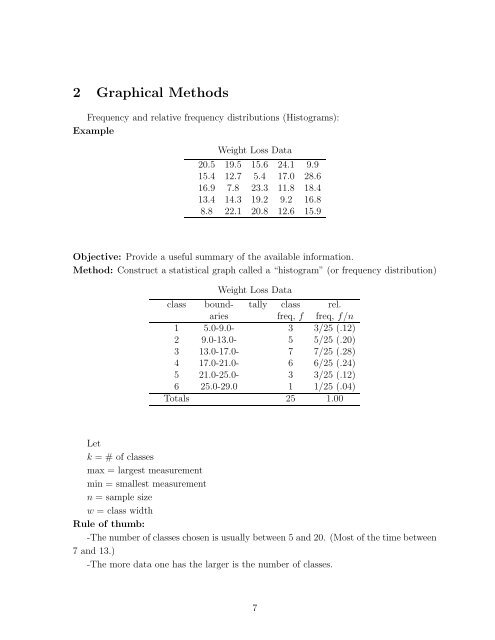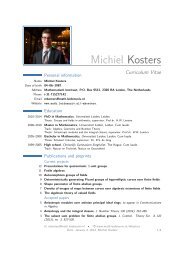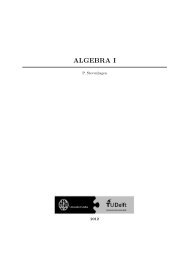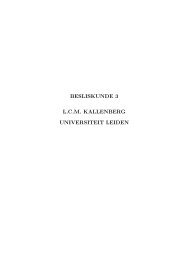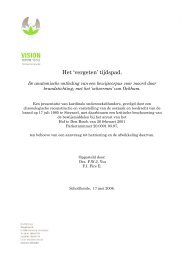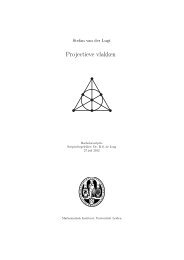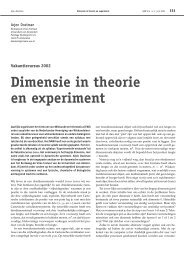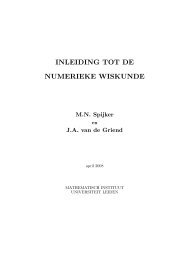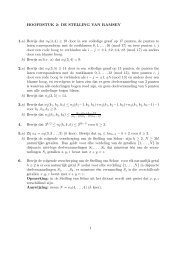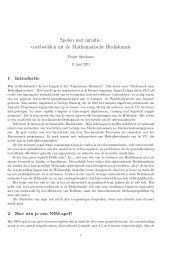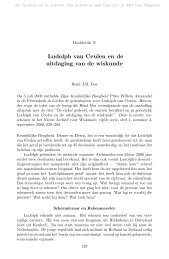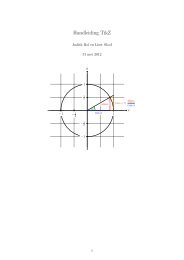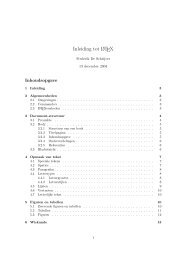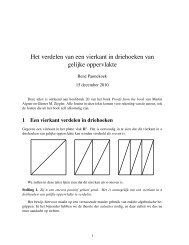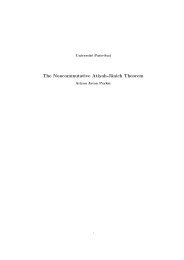MBA 604 Introduction Probaility and Statistics Lecture Notes
MBA 604 Introduction Probaility and Statistics Lecture Notes
MBA 604 Introduction Probaility and Statistics Lecture Notes
You also want an ePaper? Increase the reach of your titles
YUMPU automatically turns print PDFs into web optimized ePapers that Google loves.
2 Graphical Methods<br />
Frequency <strong>and</strong> relative frequency distributions (Histograms):<br />
Example<br />
Weight Loss Data<br />
20.5 19.5 15.6 24.1 9.9<br />
15.4 12.7 5.4 17.0 28.6<br />
16.9 7.8 23.3 11.8 18.4<br />
13.4 14.3 19.2 9.2 16.8<br />
8.8 22.1 20.8 12.6 15.9<br />
Objective: Provide a useful summary of the available information.<br />
Method: Construct a statistical graph called a “histogram” (or frequency distribution)<br />
Weight Loss Data<br />
class bound- tally class rel.<br />
aries freq, f freq, f/n<br />
1 5.0-9.0- 3 3/25 (.12)<br />
2 9.0-13.0- 5 5/25 (.20)<br />
3 13.0-17.0- 7 7/25 (.28)<br />
4 17.0-21.0- 6 6/25 (.24)<br />
5 21.0-25.0- 3 3/25 (.12)<br />
6 25.0-29.0 1 1/25 (.04)<br />
Totals 25 1.00<br />
Let<br />
k = # of classes<br />
max = largest measurement<br />
min = smallest measurement<br />
n =samplesize<br />
w =classwidth<br />
Rule of thumb:<br />
-The number of classes chosen is usually between 5 <strong>and</strong> 20. (Most of the time between<br />
7 <strong>and</strong> 13.)<br />
-The more data one has the larger is the number of classes.<br />
7


